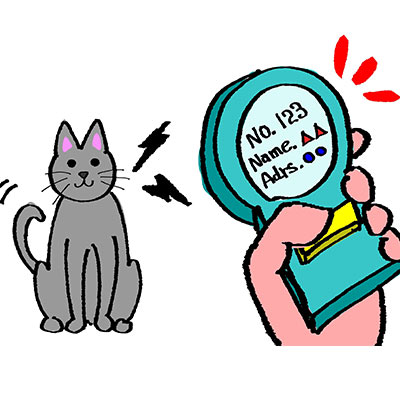1 in 3 Pets Become Lost
Countless pets become lost or stolen every year. Unfortunately, the odds are against you reuniting with your lost pet. One out of every 3 pets is lost during its lifetime; only 1 in 10 lost pets is found. A recent study found that only 2% of cats and 16% of dogs turned into shelters are reunited with their families. These statistics would be much higher if these animals had proper identification. More on pet ownership statistics in America.
How Big Is a Microchip?
A growing number of pet owners and shelters are now using microchip identification to help increase the chances that a lost or stolen pet will be recovered. An electronic chip approximately the size of a grain of rice, the microchip contains a unique code that identifies your pet. Similar to a routine vaccination, the microchip is quickly and painlessly implanted under your pet’s skin between his/her shoulder blades.
How Do Pet Microchips Work?
Most shelters and veterinary hospitals are now equipped with a scanner that basically works like a grocery store check out scanner. When a lost animal is brought to a shelter or veterinary office, the scanner is held over the animal’s back, and if there is a microchip present, the chip’s unique code will be displayed. The veterinarian or shelter then calls this code into one of the national databases of pets with microchips, and the lost pet’s owner will be contacted immediately. To ensure a speedy return of your pet, it is imperative that your contact information is always current. Lifetime registration usually requires a minimal one-time registration fee. Tens of thousands of lost pets have been reunited with their families since microchipping first became popular in the 1980’s.
A Small Cost for a Lifetime of Protection
We strongly recommend that all pets are microchipped, including those that are indoors only (indoor cats and dogs have been known to escape). Microchipping is safe for dogs and cats of all breeds and ages and does not require anesthesia. However, a good time to have your young pet microchipped is at the time of spay/neuter (although your pet can be microchipped during any scheduled exam or procedure). If you have any questions about microchipping, please feel free to ask us.
Give yourself peace of mind; be a responsible owner and have your pet microchipped.
1 The National Council of Pet Population Study and Policy

